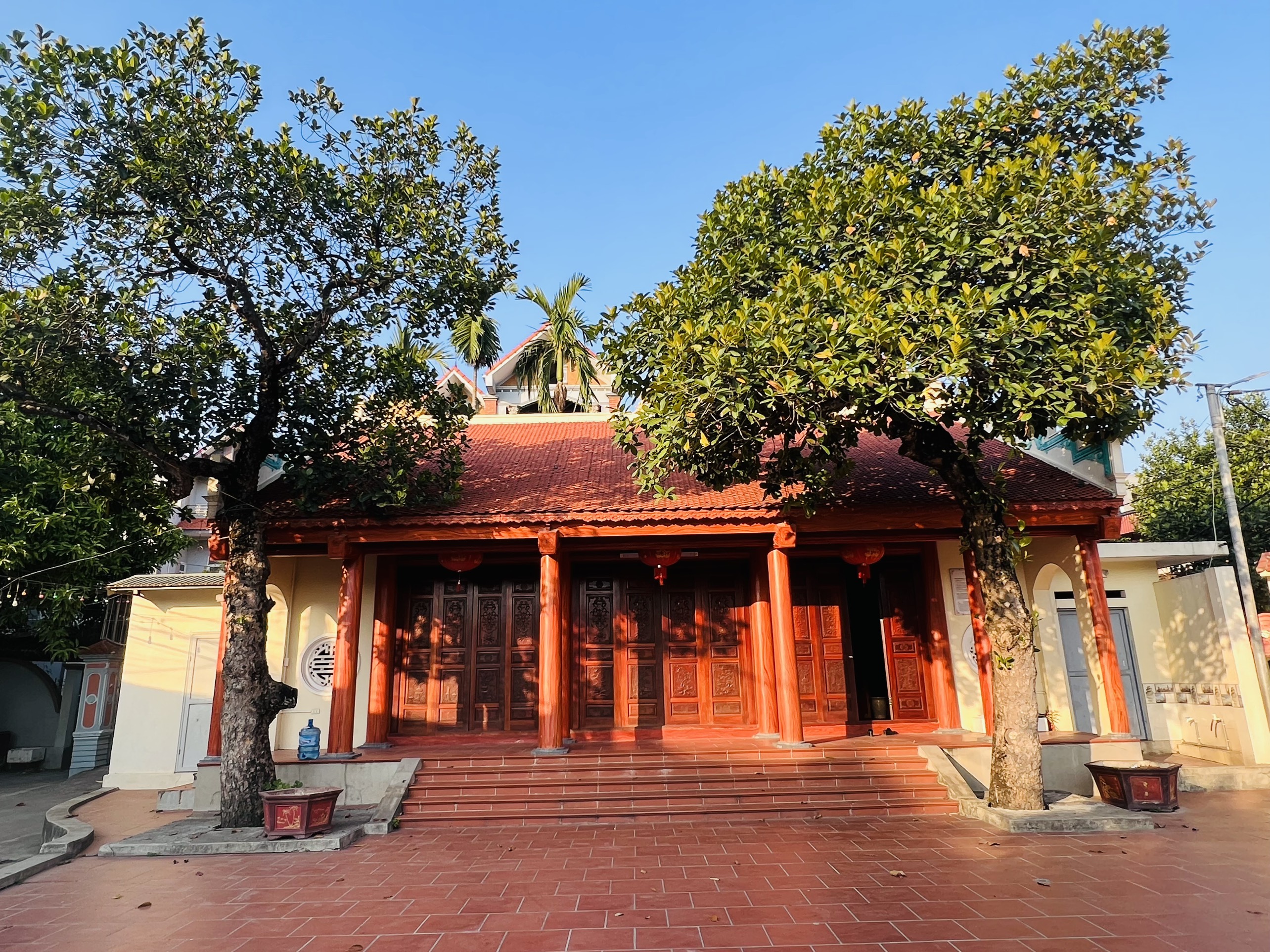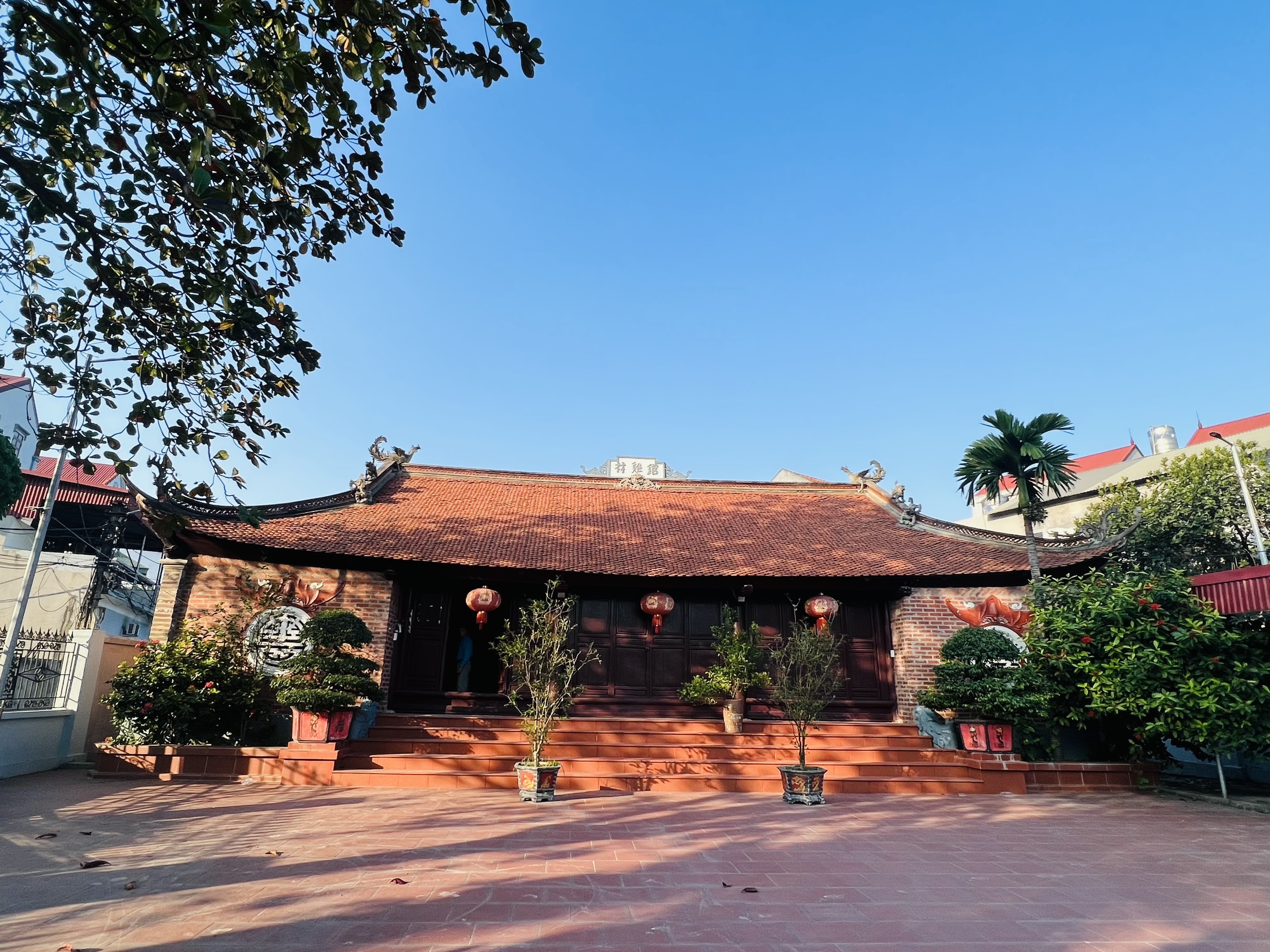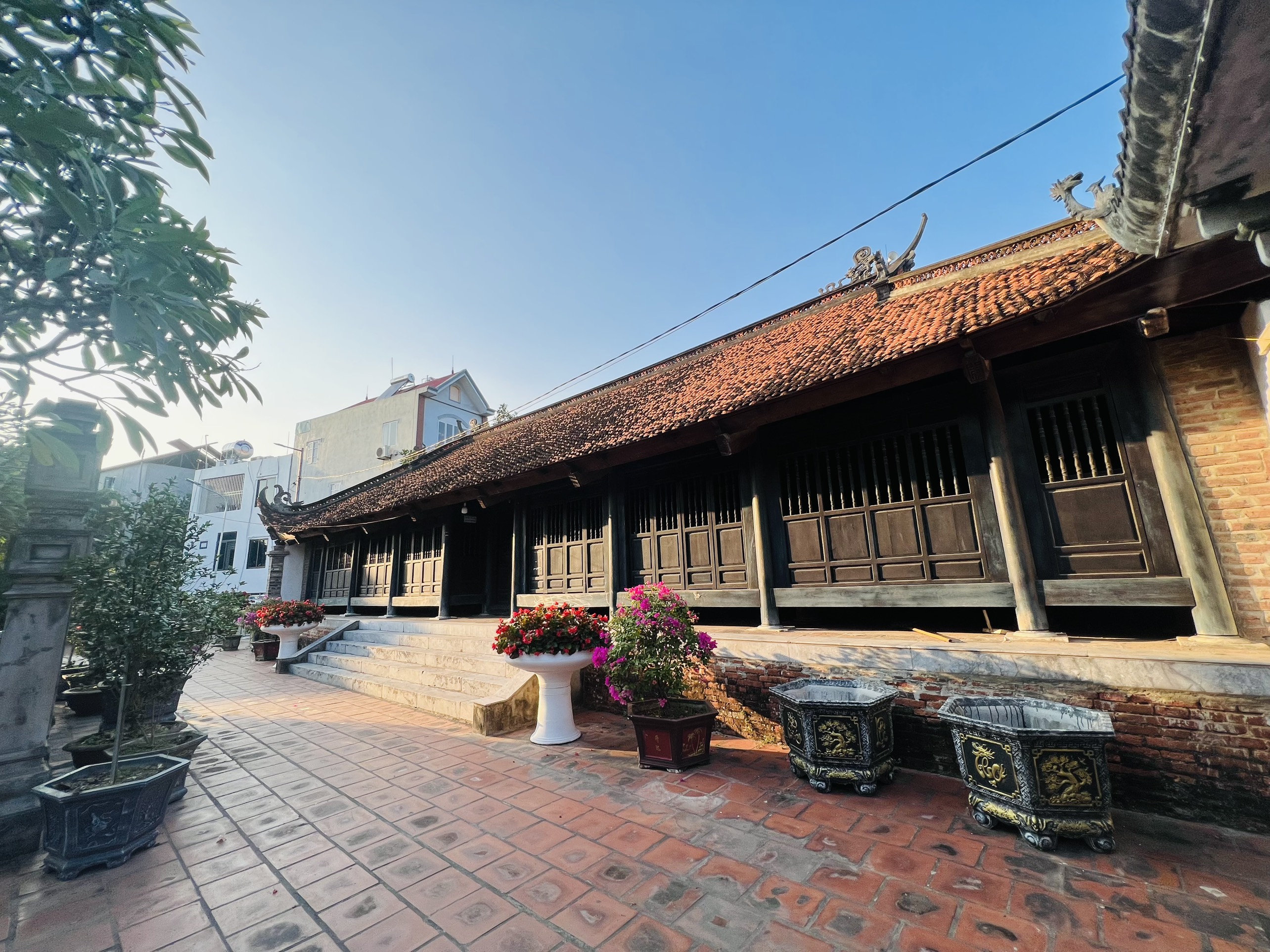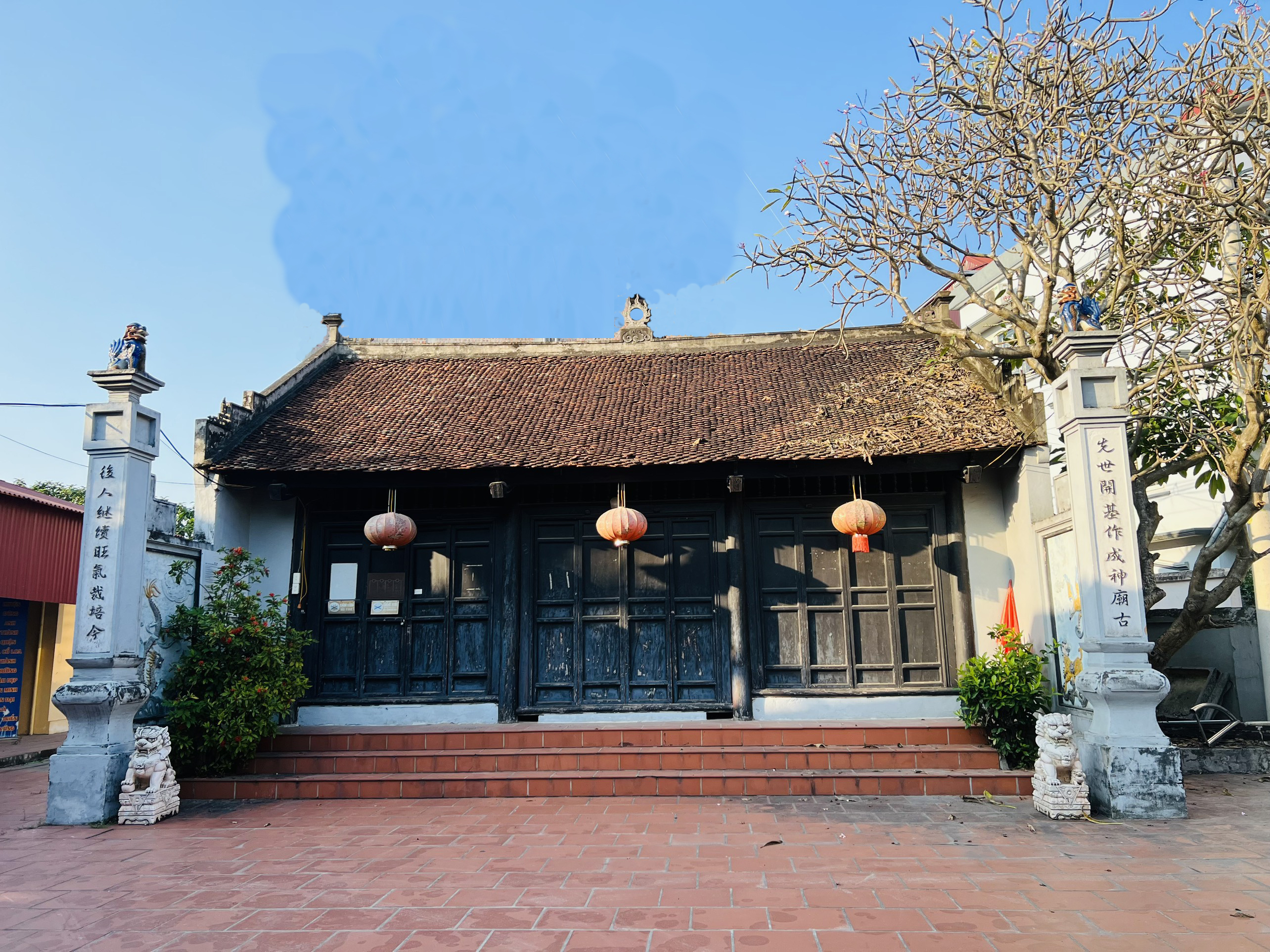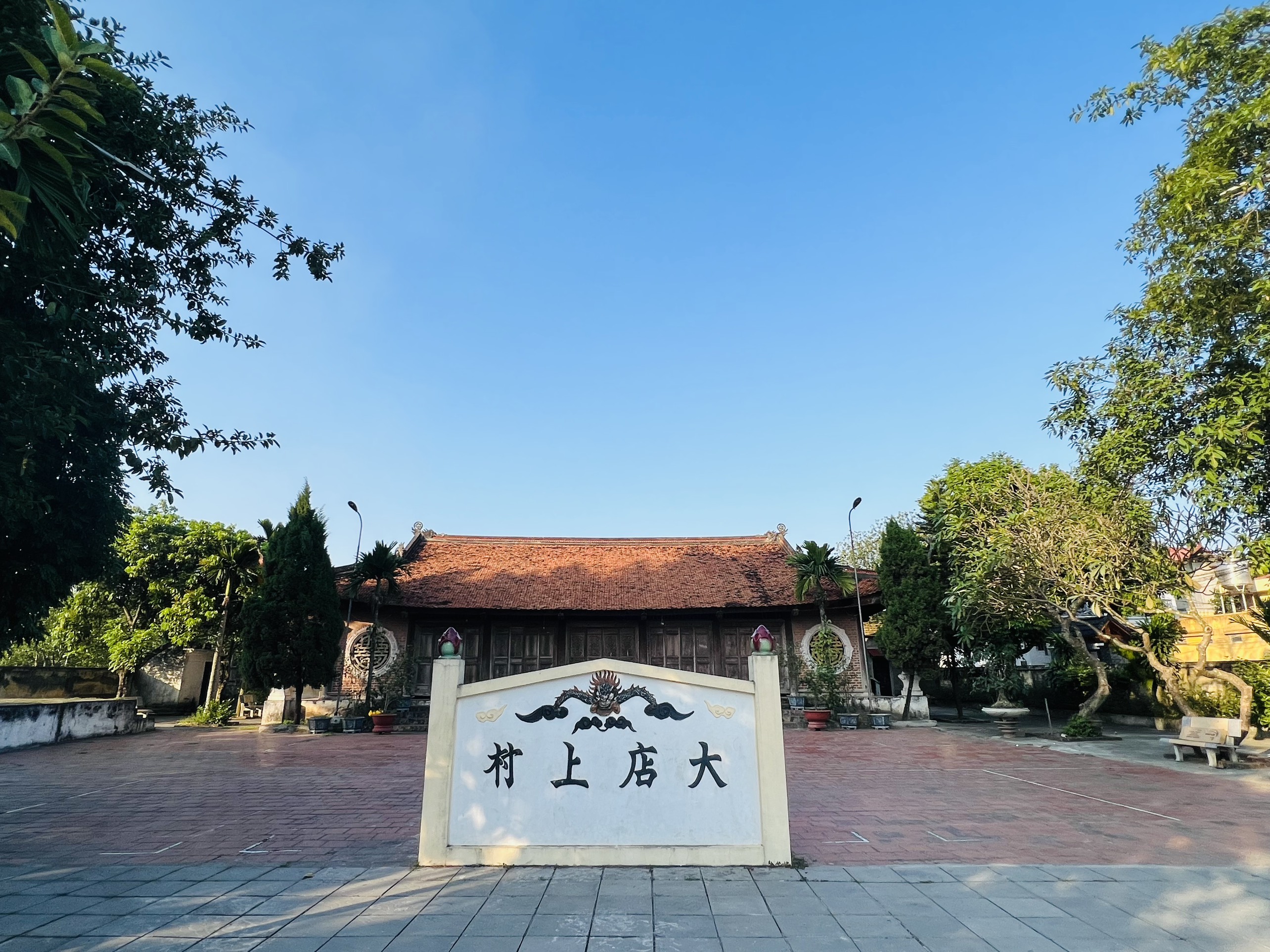Cầu Cả is the hamlet name - a small hamlet located southwest of External rampart. The village communal house is located in the center of the residential area, often called by the place name is Cầu Cả communal house.
The communal house was originally a place for public activities, cultural and religious activities of the people. At Cầu Cả communal house as well as 8 "communes" belonging to "eight communes of Cổ Loa citadel" have long worshiped An Duong Vuong as the village's tutelary god.
Cầu Cả communal house
Cầu Cả communal house is located near the east-west road of the village on an area of about 650m2. The entrance must go through a ceremonial gate with "Four Pillars" style and a small courtyard. The communal house has a Chinese word "二" (two) shaped layout, consisting of two houses with a roof distance of nearly 2m.
The Grand Ceremonial Hall, with 5 compartments and 2 hips, has a wooden frame with the roof is covered with Vietnamese Terracotta Roof Tiles. The trusses have the same structure: "Thượng giá chiêng, trung chồng xà, hạ bẩy" consists of 4 rows of columns. The front of 5 compartments has a wooden “bức bàn” door , 2 auxiliary compartments are built close to the gable wall. On the wooden frame structure, in the two “vì” of the nave and next, there are “đầu dư” carved with dragon's head and the “bức cốn” decorated with floral motifs or the Chinese word "篆".
A sanctuary, a structure with three compartments, small and lower, is not connected to Grand Ceremonial Hall. The structure of the trusses are “Thượng giá chiêng, kẻ chuyền”; “Tiền kẻ, hậu bẩy” with three rows of columns. The back “bẩy” is hung on the back wall. There are no decorative carvings, the components are mainly "smoothed". Next to the harem, to the back, there is a small Am to worship Princess Mỵ Châu.
Behind the sanctuary is a small temple to worship Princess Mỵ Châu.
This is a village communal house with a much larger scale compared to the communal house "Ngự Triều Di Quy" or the communal house of Mach Trang, but it is also a delicately carved wooden architecture, which is clearly shown on the decoration of the roof frame, the dragon’s head decorations. The number of artifacts in the relic is quite rich. At the Grand Ceremonial Hall, there is still a “cửa võng” with carvings of " four supernatural creatures " and " four seasons " in the artistic style of the Nguyen Dynasty in the 19th century. The carved wooden throne is illuminated , still has enough "smoldering trays", "table tablets". There are two illuminating palanquins: the "Bát cống" palanquin with motifs carved with dragons, clouds, flowers and leaves is quite delicate. The palanquin "Long Đình" has a harmonious shape and size. These are palanquins often used for sacrifices and processions at the festival on the 6th of January (lunar calender) every year at Thuong temple and village communal house. In addition, there are a number of common worship items: incense altar, altar “bed”, long sword stand, eight precious things...
In the communal house, there are still 15 ordinations. The oldest ordination is dated Cảnh Hưng (Lê Cảnh Hưng period 1740-1786). In particular, there is a ordination in the Tây Sơn period with the name Cảnh Thịnh (Cảnh Thịnh 1793-1801).
Cầu Cả communal house is one of three remaining communal houses of Cổ Loa relic site, is the center of cultural and religious activities of local people.
